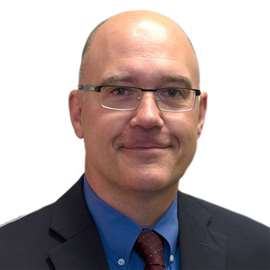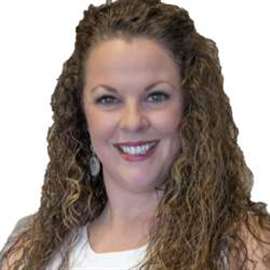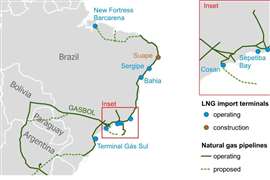In Focus: GPA Midstream’s Sarah Miller
June 12, 2025
On advocacy, engagement and the future of energy
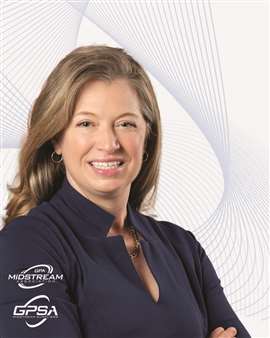 Sarah Miller
Sarah Miller
Since taking the helm of GPA Midstream Association and GPSA in September 2024, Sarah Miller has concentrated on sharpening the organizations’ advocacy efforts, strengthening member engagement, and preparing the midstream sector for a rapidly evolving energy landscape.
Miller’s background as an industry attorney, corporate leader, and longtime general counsel for GPA Midstream gives her a strong foundation for the dual leadership role. COMPRESSORtech2 recently spoke with Miller about her priorities for the association, insights from her first months on the job, and what she sees ahead for midstream companies navigating regulatory, political, and market challenges. The following is a condensed Q & A based on that conversation.
Q: What excites you most about leading GPA Midstream and GPSA at this pivotal time for the industry?
A: It’s anexciting time to be part of energy, period. There’s so much going on right now that will lead to innovation and solutions to the challenges we’re facing. I consider myself an optimist, and I look at how far we’ve come due to the creativity and expertise in this industry. I believe we have the right people to take us even further.
We’re clearly in an “energy addition” world—we need more of everything to meet growing demand. Beyond that, there’s a push for energy security and reliability. We also have global issues like energy poverty that we can help solve. GPA Midstream and GPSA, in our niche of the industry, play a critical part in supporting the infrastructure that makes this all possible. That’s exciting.
Q: Let’s talk about that niche. How do you describe the role GPA Midstream and GPSA play in the broader energy ecosystem?
A: I often start by explaining what midstream is, because people tend to be more familiar with upstream—exploration and production—or downstream, like utility gas lines or power plants. Midstream is everything in the middle. We’re talking about gathering pipelines that collect gas from wells and processing plants that separate dry gas from natural gas liquids (NGLs). Our members handle that.
Midstream isn’t limited to natural gas. We also touch crude oil and NGLs that are used in countless everyday products. GPA Midstream and GPSA support the operators and suppliers who make this part of the value chain work—and that backbone is essential for delivering reliable energy.
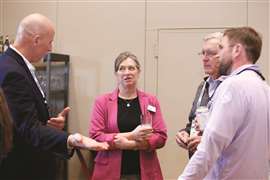 Miller took the helm of GPA Midstream in September 2024.
Miller took the helm of GPA Midstream in September 2024.
Q: At a recent industry event, the keynote mentioned that the industry does its job so well behind the scenes that the public often doesn’t realize what’s involved. How is GPA Midstream working to change that?
A: That’s a great point—and we’ve called ourselves the “invisible industry” for that very reason. We’ve done such a good job keeping the lights on that people don’t realize how it happens. Many of us are engineers who put our heads down and solve problems logically, assuming the value is obvious. But we’re realizing we need to reveal ourselves more.
We have a federal advocacy program in Washington, D.C., where we work to educate lawmakers and regulators. We host site tours, provide technical comments, and explain how regulations affect real-world operations. We also offer an “Intro to Midstream” training course twice a year, which we’re now planning to host in D.C. to make it more accessible to decision-makers.
Another key initiative is our Let’s Clear the Air campaign. It’s a fact-based educational outreach effort aimed at the “movable middle”—those who are scientifically curious and want to understand where their energy comes from. We’re not targeting the political extremes, just people who want solid information to make informed decisions as voters, consumers, and citizens.
Q: What does that outreach look like in practice? How do you connect with the general public?
A: For the Let’s Clear the Air campaign, we created an ad series that follows a fictional character named Pete, a midstream operator, through a day in his life. It uses “scrollytelling”—you scroll through the story on your phone, and it shows how Pete’s day intersects with everything midstream enables, from his toothpaste to his smart phone.

It’s designed to be approachable, educational, and factual . We use reliable sources like the U.S. Energy Information Administration. And we welcome feedback—even from skeptics—because it opens the door for dialogue. If someone challenges us on our claims, we can point to the data and have a real conversation.
Q: One challenge the industry faces is workforce development. How is GPA Midstream helping to train and attract the next generation of workers?
A: Our members rely on us for technical training. In addition to the “Intro to Midstream” class, we offer training on the Engineering Data Book—an industry-standard reference that’s been around for decades. It’s now cloud-based and continually updated by our editorial board of member experts. I’ve met people who still have their first Data Book from college on their shelf. That’s how essential it is.We also host the spring Technical Conference and the annual GPA Midstream Convention in September with educational forums and strong networking opportunities. Beyond formal training, our committee structure brings together everyone from senior leaders to new professionals. We even offer designated “young professional” seats on technical committees so newcomers can learn directly from industry veterans.
Importantly, the agendas for those committees come from our members. They’re solving real-world challenges, and we serve as the platform for that collaboration.
Q: What are some of the technical challenges committees are focusing on right now?
A: Emissions are a big one. We have an emissions committee focused on how to accurately measure, understand, and reduce emissions. Our members want to be at the cutting edge of responsible operations. Emissions aren’t just an environmental issue—they’re also a financial one. If you’re losing product to leaks or inefficiencies, that’s lost revenue. So, reducing emissions is good business.
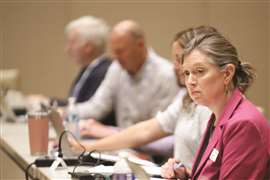
Q: You mentioned infrastructure permitting as a key issue. With AI and data center growth driving more electricity demand—much of it from natural gas—how prepared is midstream to meet this demand?
A: I think we’re well positioned to help meet those needs. Natural gas currently provides about 43% of the electricity in the U.S. Many people don’t realize that electrification depends heavily on fossil fuels—about 60% of electricity generation comes from them. So even if we electrify everything, we still need natural gas to make that possible.
The challenge isn’t supply—we have abundant domestic gas resources. The challenge is infrastructure and permitting. Both producers and pipeline companies are making long-term investments. But if permitting is unpredictable or subject to endless litigation, it’s hard to justify those investments. We need a permitting process that ensures safety and environmental protection without becoming a tool to block development outright.
That’s why we’re encouraged by federal efforts to review and improve permitting rules. We want to be part of those conversations. Our members live in the communities they serve—they care about safety, the environment, and reliability. We’re not an outside force. We are the community.
Q: That leads to a broader question about public perception. You’ve said before that the industry has been innovative and responsible but hasn’t always communicated that well. Has that started to shift?
A: I think so. Operators I’ve worked with or represented have always cared about doing the right thing. Yes, they make economic decisions—they’re businesses—but there’s a genuine commitment to safety, to environmental responsibility, and to earning the social license to operate.
And you’re right, communication is part of that. It comes back to education. When people understand how energy really works—how it gets to them and what’s involved in delivering it safely and affordably—they start to appreciate the value and the innovation in our industry.
Q: One last question. There’s been a lot of consolidation in the industry—mergers, acquisitions, fewer companies overall. How does that affect GPA Midstream?
A: That’s a very real trend and one we’ve been watching closely. The “pie” of the industry isn’t necessarily getting smaller, but the slices are bigger. That means our benefits are spread across fewer companies, even though the work continues to grow.
Info Box
2025 GPA Midstream School of Gas Chromatography
The 50th annual week-long training, designed, managed and conducted by GPA Midstream’s Analysis, Test Methods & Product Specifications Committee.
When: Aug. 11–15
Where: University of Texas at Arlington
Program highlights:
Hands-on curriculum for chromatograph operators, measurement technicians and engineers
Industry-led, on-machine demonstrations and operation
Analysis of natural gas and natural gas liquid samples, plus an introduction to extended analysis
Register: https://tinyurl.com/fcxpmnzx
MAGAZINE
NEWSLETTER

CONNECT WITH THE TEAM
